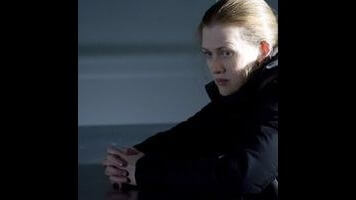The Killing gets it exactly right in season four, just in time to end

[This is a spoiler-free overview of The Killing’s fourth season. Please keep the comments spoiler-free here, but head over to Spoiler Space to discuss the intricacies of the plot.]
The Killing did a remarkable job of rising from the dead after a first-season finale that crushed most of the goodwill it had built up. Disgruntled fans who had expected some resolution after waiting patiently through red herring after red herring were made to tune in for a second season that meandered toward answering its question: Who killed Rosie Larsen? (I barely remembered the answer, and had to look it up.)
But season three course-corrected nicely, keeping the show’s best elements—specifically the chemistry between its two leads, played by Mireille Enos and Joel Kinnaman, as well as a tendency toward darkness—and jettisoning some of the worst. (Though it did still insist on making everybody a suspect at one point or another.) With only six episodes, the fourth and final season—which debuted all at once on Netflix today—didn’t have as much time to fuck around. (Though it did have time to add lots of “fuck”s, thanks to its new network.)
A less complicated show might’ve let last season’s resolution simply pass: Detective Sarah Linden (Enos) murdered serial killer/her lover James Skinner (Elias Koteas) rather than arrest him, and Detective Stephen Holder (Kinnaman) helped her cover it up. But rather than allow that conspiracy to rest, The Killing smartly makes it half the drama in season four.
This season begins exactly where the last left off: Holder and Linden are actively engaged in covering up Linden’s crime when they’re put on a brutal new case. A fabulously well-to-do family has been savagely attacked; mom, dad, and two girls are dead, while a son—military cadet Kyle Stansberry (Tyler Ross)—escaped with a gunshot wound to the head (and a convenient case of amnesia).
It’s a solid mystery, and it works well intertwined with the story of Carl Reddick (the excellent, funny Gregg Henry), another cop who quickly realizes that something doesn’t smell right about Linden and Holder’s story about their missing boss. The mass murder takes some silly detours like past seasons, with a couple of suspects that any Killing viewer will know aren’t going anywhere, but mostly it keeps you legitimately guessing.
With that established, The Killing is free to stretch its legs with those strengths. Enos and Kinnaman are excellent throughout, both when they’re arguing about the case at hand and colluding about the other. They tease and joke but rarely doubt each other, which makes it all the more affecting when they do. Joan Allen plays a viper-like colonel of the military academy where the wounded boy goes, and when she’s not overreaching, she’s fantastic.
The show gave up some of its insistence on Seattle-rain mood-setting, too, letting the darkness of the plot—and it is monumentally dark—do the work. It certainly didn’t hurt that some ace guest directors came in to capture the mood: Jonathan Demme does a particularly nice job with the finale. And each episode has a terrific sense of pace, ending on a nail-biter (which is less exciting when Netflix automatically plays the next episode, but still).
Just in time for its end, The Killing became the show that it promised to be during those early episodes of season one. It took a circuitous route, with two cancellations and a move to Netflix, but it sticks the landing with this affecting, impressive final season.
[Again, if you want a more detailed discussion, head over to the show’s Spoiler Space.]